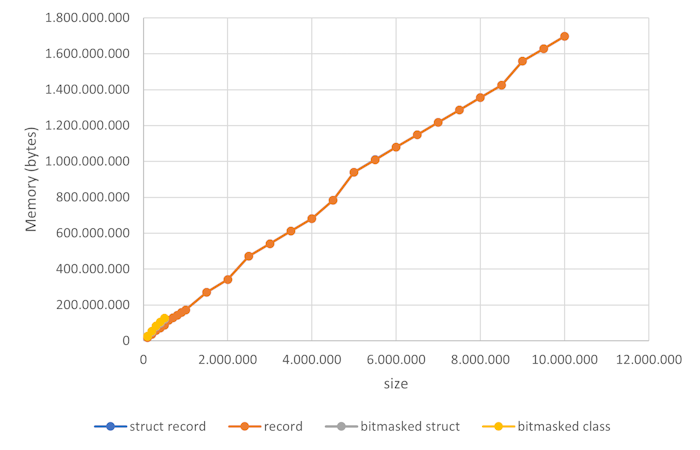What is the difference between Test_two and A_Package::Test_one in Perl?
In Perl programming, naming conventions for symbol table entries can seem confusing at first glance, especially when we encounter entries like Test_two and A_Package::Test_one. In this article, we will explore the distinctions between these two styles of naming and how they impact the scope and accessibility of your subroutines. Understanding Symbol Tables in Perl In Perl, every package has its own symbol table, which serves as a collection of all the symbols (subroutines, variables, etc.) defined within that package. This allows for the organization of code into different namespaces, ensuring that subroutine names do not clobber each other in larger applications. The Significance of Test_two When we define a subroutine using the name Test_two, like this: *{"Test_two"} = sub{"Testing Two!"}; This entry is being created relative to the current package, in this case, Testing. By not including a package prefix, Perl understands that Test_two belongs to the Testing package. As a result, this subroutine can only be accessed in the scope of that package unless specified otherwise. The Significance of A_Package::Test_one In contrast, when we reference A_Package::Test_one: *{"A_Package::Test_one"} = sub{"Testing One!"}; Here, you are creating a subroutine that is absolute, meaning it is associated with the A_Package namespace regardless of the current package context. This is indicated by the double colon (::) which acts as a separator between the package name and the symbol name. Summary of Differences Scope: Test_two: Local to Testing package. Accessible within the Testing package scope only. A_Package::Test_one: Absolute and accessible using the A_Package namespace, regardless of the current package context. Symbol Table Location: Test_two: Entry located in Testing's symbol table. A_Package::Test_one: Entry located in A_Package's symbol table. Usage: Test_two might typically be used within tests or modular code specific to that package, while A_Package::Test_one can be used universally across different parts of your code that require access to that subroutine. Practical Example Let's extend our example with some code that demonstrates calling these subroutines. Here’s how you can use them in your program: package Testing; use warnings; use strict; sub test_it { no strict qw(refs); *{"Test_two"} = sub{"Testing Two!"}; *{"A_Package::Test_one"} = sub{"Testing One!"}; } sub run_tests { test_it(); print Test_two(), "\n"; # This will work print A_Package::Test_one(), "\n"; # This will also work, as long as A_Package is defined } 1; In the code above, calling Test_two() will output "Testing Two!" as we are still within the Testing package. When calling A_Package::Test_one(), it assumes that you have the A_Package defined somewhere in your codebase, making it accessible in any context. Frequently Asked Questions Can you access Test_two from A_Package? No, since Test_two is defined locally within the Testing package. You cannot access it directly from other packages unless explicitly exported or accessed via a method. Why would you use absolute names like A_Package::Test_one? Using absolute names can help prevent naming collisions in larger projects where different packages may define similar subroutine names. It also makes it clear which package you are working with when debugging or maintaining the code. What happens if A_Package is not defined? If A_Package is not defined before you try to call A_Package::Test_one(), Perl will throw a runtime error indicating that the package is not found or does not exist. Can you mix local and absolute names? Yes, if done thoughtfully, mixing local and absolute names can greatly enhance clarity within your code, especially in larger projects where context management becomes crucial. In conclusion, understanding the difference between relative and absolute names in Perl symbol tables helps in organizing your code effectively and avoids potential conflicts in larger applications. If you’re just starting with Perl, getting familiar with these concepts will make your coding journey much more seamless!

In Perl programming, naming conventions for symbol table entries can seem confusing at first glance, especially when we encounter entries like Test_two and A_Package::Test_one. In this article, we will explore the distinctions between these two styles of naming and how they impact the scope and accessibility of your subroutines.
Understanding Symbol Tables in Perl
In Perl, every package has its own symbol table, which serves as a collection of all the symbols (subroutines, variables, etc.) defined within that package. This allows for the organization of code into different namespaces, ensuring that subroutine names do not clobber each other in larger applications.
The Significance of Test_two
When we define a subroutine using the name Test_two, like this:
*{"Test_two"} = sub{"Testing Two!"};
This entry is being created relative to the current package, in this case, Testing. By not including a package prefix, Perl understands that Test_two belongs to the Testing package. As a result, this subroutine can only be accessed in the scope of that package unless specified otherwise.
The Significance of A_Package::Test_one
In contrast, when we reference A_Package::Test_one:
*{"A_Package::Test_one"} = sub{"Testing One!"};
Here, you are creating a subroutine that is absolute, meaning it is associated with the A_Package namespace regardless of the current package context. This is indicated by the double colon (::) which acts as a separator between the package name and the symbol name.
Summary of Differences
-
Scope:
-
Test_two: Local toTestingpackage. Accessible within theTestingpackage scope only. -
A_Package::Test_one: Absolute and accessible using theA_Packagenamespace, regardless of the current package context.
-
-
Symbol Table Location:
-
Test_two: Entry located inTesting's symbol table. -
A_Package::Test_one: Entry located inA_Package's symbol table.
-
-
Usage:
-
Test_twomight typically be used within tests or modular code specific to that package, whileA_Package::Test_onecan be used universally across different parts of your code that require access to that subroutine.
-
Practical Example
Let's extend our example with some code that demonstrates calling these subroutines. Here’s how you can use them in your program:
package Testing;
use warnings;
use strict;
sub test_it {
no strict qw(refs);
*{"Test_two"} = sub{"Testing Two!"};
*{"A_Package::Test_one"} = sub{"Testing One!"};
}
sub run_tests {
test_it();
print Test_two(), "\n"; # This will work
print A_Package::Test_one(), "\n"; # This will also work, as long as A_Package is defined
}
1;
In the code above, calling Test_two() will output "Testing Two!" as we are still within the Testing package. When calling A_Package::Test_one(), it assumes that you have the A_Package defined somewhere in your codebase, making it accessible in any context.
Frequently Asked Questions
Can you access Test_two from A_Package?
No, since Test_two is defined locally within the Testing package. You cannot access it directly from other packages unless explicitly exported or accessed via a method.
Why would you use absolute names like A_Package::Test_one?
Using absolute names can help prevent naming collisions in larger projects where different packages may define similar subroutine names. It also makes it clear which package you are working with when debugging or maintaining the code.
What happens if A_Package is not defined?
If A_Package is not defined before you try to call A_Package::Test_one(), Perl will throw a runtime error indicating that the package is not found or does not exist.
Can you mix local and absolute names?
Yes, if done thoughtfully, mixing local and absolute names can greatly enhance clarity within your code, especially in larger projects where context management becomes crucial.
In conclusion, understanding the difference between relative and absolute names in Perl symbol tables helps in organizing your code effectively and avoids potential conflicts in larger applications. If you’re just starting with Perl, getting familiar with these concepts will make your coding journey much more seamless!













































































